3D-printing
Latest

‘Robotic Habitats’ imagines a self-sustaining AI ecosystem
As artificial intelligence advances at an unprecedented pace, we tend to see its arrival in emotional terms -- usually, either excitement or fear. But Noumena, a collective of designers, engineers and architects, is looking at AI and robots more practically. What form will they take, how will they survive and develop, and where will they live? It aims to explore those ideas with an exhibition entitled "Robotic Habitats."
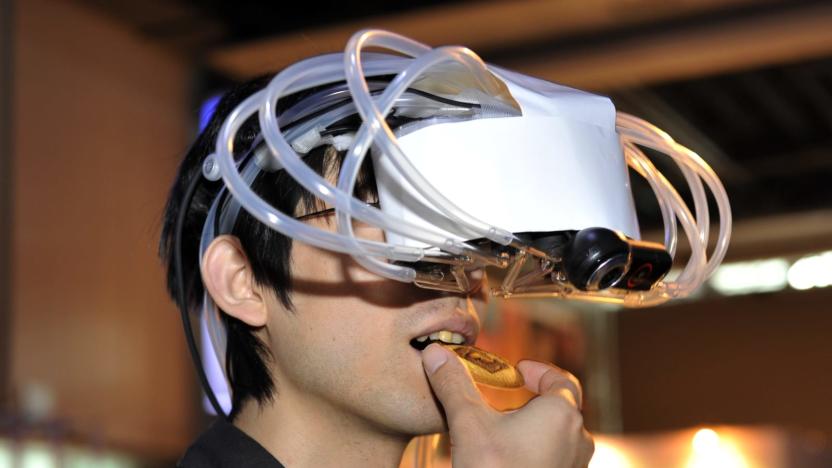
Smellable VR is coming whether you want it or not
Modern virtual reality is a treat for the senses. Well, two of them at least. "Sight and sound have been the staple of VR environments," Benjy Li, a postdoctoral researcher with Stanford's Virtual Human Interaction Lab, told Engadget. Haptic feedback is starting to allow for basic touch, but the next radical evolution in VR could actually come via your nose (and/or mouth).

Teaming humans with robotic AI will remake modern manufacturing
Your public school education exists, in large part, thanks to the Second Industrial Revolution. When the revolution took hold of America in the 1870s, 30 years after the end of the first, half of the US population still spent their days toiling in fields. Education was typically voluntary, assuming the family was wealthy enough to afford tutors or school fees, and usually reserved for boys. With the development of commercial fertilizer and the internal combustion engine, productivity exploded while the number of farmers dropped to less than two percent of the population. It lessened the demand for child labor which in turn led to increased support for compulsory education for both sexes.
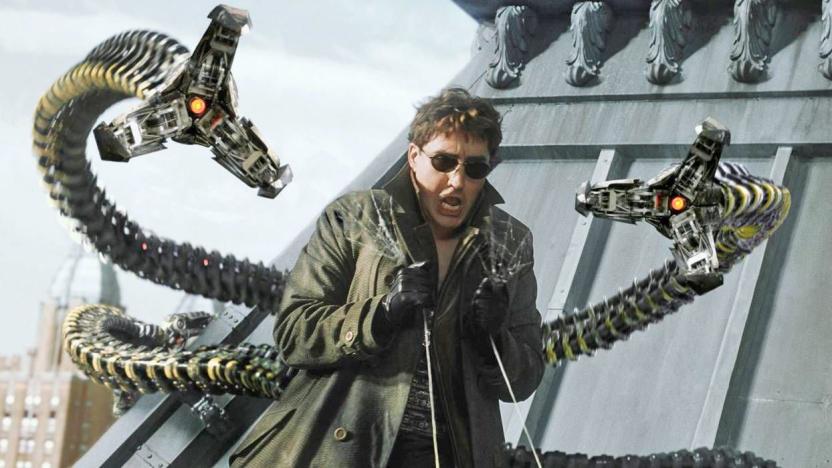
Everyone could soon have the powers of Doctor Octopus
Doctor Otto Octavius may have been a power-mad scientist bent on world domination and the utter ruin of his nemesis, Spider-Man, but the guy had some surprisingly cogent thoughts on prosthetics development. And although mind-controlled supernumerary robotic limbs like Doc Oc's still only exist in the realm of the Marvel Universe, researchers here in reality are getting pretty darn close to creating their own. And in the near future, we'll be strapping on extra appendages whenever we need a helping hand -- or supplemental third thumb.

3D printing will revolutionize how the Marine Corps fights
"The people closest to the problem are also the people closest to the solution," Capt. Chris Wood, co-lead for Additive Manufacturing with the US Marine Corps, told Engadget. In 2016, the USMC put that adage to the test as it launched the Logistics Innovation Challenge, a program "to solicit ideas from Marines, sailors and civilians from across the Marine Corps" that would address challenges that they face in their daily duties. And this is only the start to the US Military's additive-manufacturing aspirations. Pretty soon, everything from ammunition to autonomous vehicles could come from the Corps' cadre of 3D printers.

Formlabs makes high-quality, automated 3D printing more affordable
Your basic hobbyist 3D printer (technically known as Fused Deposition Modeling or FDM) is great for rapid prototyping because, while the objects it prints are a bit rough, the system and its associated printing costs are relatively inexpensive. However, if you want a more polished and professional-looking product, selective laser sintering (SLS) is the way to go. Problem with that is, of course, that the average SLS 3D printer is roughly the size of a small car and costs anywhere from $200,000 to $5 million. But, there's now a third option. 3D Printer manufacturer Formlabs announced on Monday that it will begin selling a scaled down SLS system that fits on a tabletop and costs 20 times less than other comparable printers.
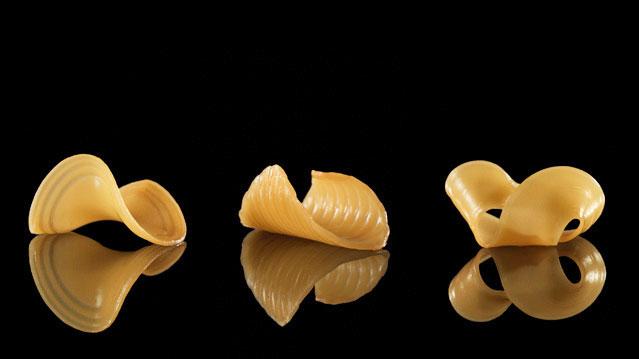
MIT 3D-printed the shape-shifting future of pasta
A new research project from the Massachusetts Institute of Technology's Tangible Media Group combines 3D printing, molecular gastronomy and macaroni. According to MIT News, researchers Wen Wang and Lining Yao have engineered flat sheets of gelatin and starch into shape-shifting noodles that react and fold when exposed to water. While Yao's goal of one day creating a self-folding dumpling is still out of reach for now, the research team thinks their breakthrough could help reduce food shipping costs and lead to new trends in fine dining.
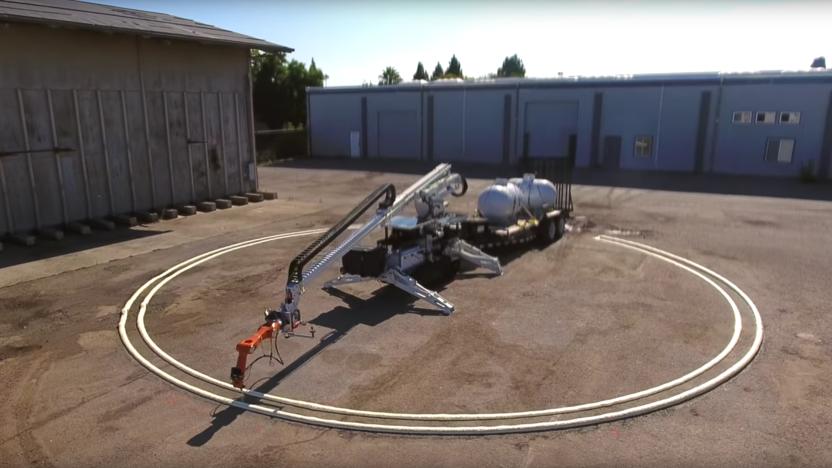
MIT's mobile 3D printer built the largest structure to date
Your next house could be built by a robot. Following the recent success of San Francisco-based startup Apis Cor, a team of MIT researchers have created a mobile autonomous 3D printer of their own. And to prove that the prototype works, the team had it build a 12-foot tall, 50-foot-wide igloo out of quick-setting foam -- the largest such structure made by a robot to date.
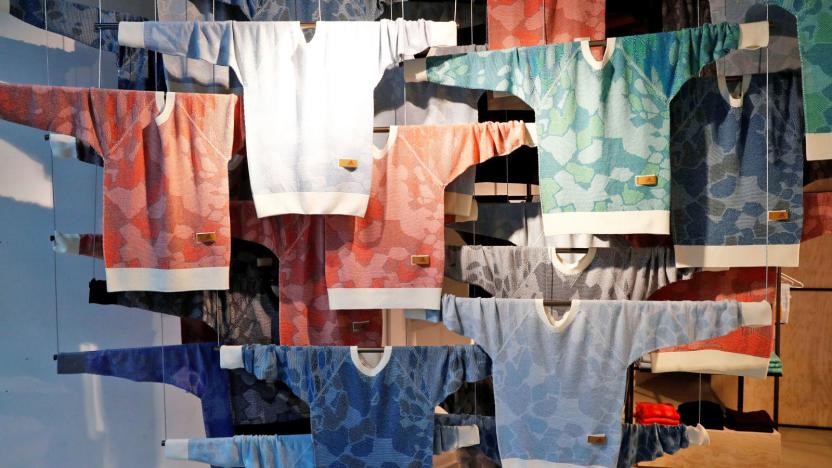
Adidas will knit you a $200 sweater while you wait
In the sneaker industry, it normally takes around 12 to 18 months for a new clothing design to make it to store shelves. Adidas wants to shorten that wait to a matter of hours. To that end, the German fitness apparel company has opened a pop-up shop in Berlin that enables customers to design, manufacture and buy a customized merino wool sweater for 200€ ($215).

Hummingbird-inspired wind turbines, and more in the week that was
It's official: New York just gave the green light to build the largest offshore wind farm in US history. The project will be located 30 miles southeast of Montauk, and it will produce enough energy to power 50,000 homes. Meanwhile, researchers have developed a revolutionary new wind turbine that trades spinning blades for flapping wings reminiscent of a hummingbird. Dubai kicked off phase three of the world's largest solar park. When it's complete it will produce a whopping 800 megawatts of clean energy. Speaking of the sort, Elon Musk is a champion of clean energy -- so imagine our surprise when Musk threw his support behind former ExxonMobil CEO Rex Tillerson as Secretary of State. And Ireland just voted to become the world's first country to fully divest from fossil fuels.
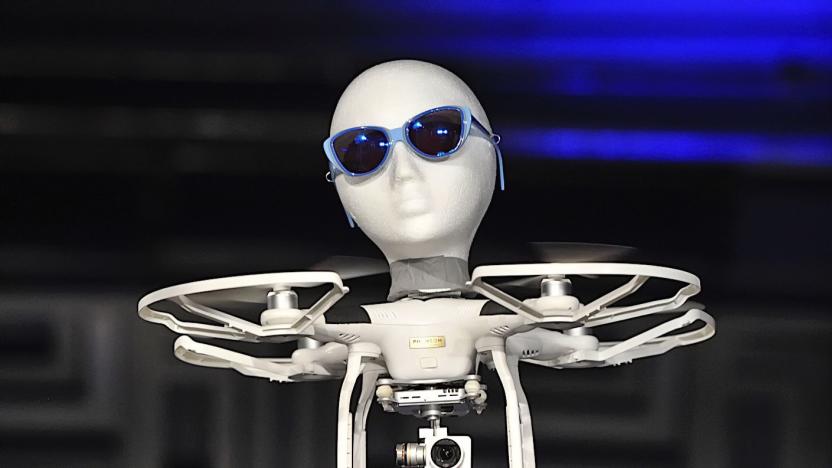
High tech meets haute couture at Silicon Valley Fashion Week
Pop culture loves to pit fashion and technology against one another. While fashionistas are often portrayed as really really good looking buffoons (looking at you, Derek), techies are rarely seen without being swaddled in their trusty black hoodies. But, as the 2016 Silicon Valley Fashion Week shows, it doesn't have to be that way.

The Engadget Podcast Ep 8: He's Simple, He's Dumb, He's the Pilot
On this week's episode managing editor Dana Wollman, reviews editor Cherlynn Low and senior editor Devindra Hardawar join host Terrence O'Brien to discuss Elon Musk's plans to colonize Mars, racing 3D boats in Red Hook and the over-simplification of "the cyber" at the first presidential debate.

This mummy's skull was recreated via 3D printer
Using a mummified head found in the collections of the University of Melbourne, scientists were able to reconstruct the skull of a deceased 25-year-old woman from via 3D printer.
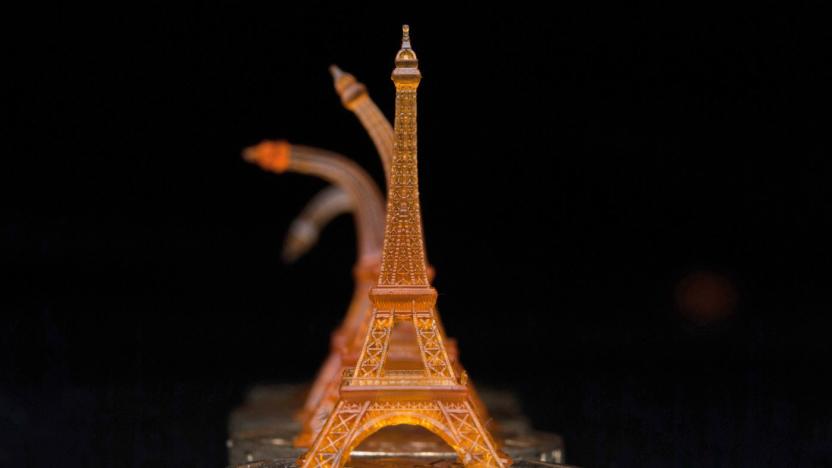
MIT's new 3D-printer makes objects that remember their shape
3D printing has done a lot for medical science. It's helped us create better prosthetics, manufacture artificial vertebrae and even develop smaller internal cameras. Next, it could help us revolutionize medication delivery. MIT researchers are using a new 3D-printing process to create tiny structures that change shape at specific temperatures -- opening the door for a new drug delivery system that only medicates patients if they have a fever.

ICYMI: Auto-transcribing Moleskines, meta-Rembrandts and more
#fivemin-widget-blogsmith-image-955376{display:none;} .cke_show_borders #fivemin-widget-blogsmith-image-955376, #postcontentcontainer #fivemin-widget-blogsmith-image-955376{width:100%;display:block;} #fivemin-widget-blogsmith-image-721661{display:none;} .cke_show_borders #fivemin-widget-blogsmith-image-721661, #postcontentcontainer #fivemin-widget-blogsmith-image-721661{width:100%;display:block;} #fivemin-widget-blogsmith-image-712710{display:none;} .cke_show_borders #fivemin-widget-blogsmith-image-712710, #postcontentcontainer #fivemin-widget-blogsmith-image-712710{width:100%;display:block;} try{document.getElementById("fivemin-widget-blogsmith-image-712710").style.display="none";}catch(e){}Today on In Case You Missed It: Moleskine debuted its new Smart Writing Set which automatically digitizes anything that you physically write or draw. A team of art historians taught a computer to perfectly match Rembrandt's artistic style then had it 3D print a brand new work using ultraviolet ink. And a modder managed to not only cram a bunch of extra buttons onto a Game Boy chassis, he also installed a ROM reader so he can play virtually any classic Nintendo title with it. Good form.

Inventor builds super creepy 'Scarlett Johansson' robot
Ricky Ma, an inventor and maker, has spent the last year and a half building a robotic starlet from scratch on the balcony of his Hong Kong apartment. He recently unveiled the Mark I, a $50,000 prototype modeled after... well, he wouldn't specify to Reuters but come on, that's obviously Scarlett Johansson. The robot is comprised of a 3D-printed skeleton supporting the various electronic and mechanical bits with everything wrapped in a pliable silicone skin.

Researchers develop a polymer sponge to repair broken backs
Researchers at the Mayo Clinic have developed a novel spinal graft that automatically "grows" to the requisite size and shape when implanted. The spongy polymer isn't meant to be a formal replacement like the 3D printed neck bones recently installed by a team from the Prince of Wales Hospital in Sydney. Instead, it's designed to act as a bone graft -- a biodegradable scaffold through which a cancer patient's own bones can regrow after surgery.

Guy creates handheld railgun with a 3D-printer
An ambitious maker has built a partly 3D-printed railgun that can fire aluminum or graphite projectiles at over 250 meters per second (560 mph). No, this isn't Quake, but it's no janky, all-plastic gun, either. The "handheld" weapon houses six capacitors that weigh 20 pounds and deliver over 1,800 joules of energy per shot. And it indeed works just like a full-sized railgun, using parallel electrodes to fire an "armature" bullet. The creator, David Wirth, added an Arduino Uno R3 to monitor charging levels, temperature and other factors, and tweaked the rails after he noticed "plasma damage."

The 'world's biggest' 3D printer will build emergency houses
The design team at WASP (World's Advanced Saving Project) will unveil what is being billed as the world's largest 3D printer on Friday in Rieti, Italy. Dubbed the "Big Delta," this enormous device stands roughly 40 feet tall with a 20 foot diameter. But despite its size, the Big Delta is extremely efficient and uses only 100 watts of power. Its oversized design allows the Big Delta to quickly and easily print low-cost disaster-relief housing. What's more, it can do so using locally-sourced materials (read: dirt and mud) which also acts to minimize construction costs. The WASP team also foresees employing this printer for non-disaster-related home building. According to a company release, the Big Delta help accommodate the estimated 4 billion people worldwide that will lack adequate housing by 2030.

Inhabitat's Week in Green: 3D-printed suites and a new Prius
Each week our friends at Inhabitat recap the week's most interesting green developments and clean tech news for us -- it's the Week in Green. Researchers at the University of Michigan are making waves in solar panels -- literally. It turns out that their undulating photovoltaic strips can collect up to 30 percent more energy than flat arrays. In other energy news, China and Pakistan just announced plans to build the world's largest solar farm in the Punjabi desert, and Aspen, Colorado, just became the third city in the US to be powered entirely by renewable energy. Heads up students -- we're giving away three solar energy-generating Voltaic backpacks and you can win one here. Voltaic also just launched a new solar-powered light that shines for 30-plus hours on a single charge. And designer Pauline van Dongen debuted a solar parka that keeps you charged when you journey off the grid.





